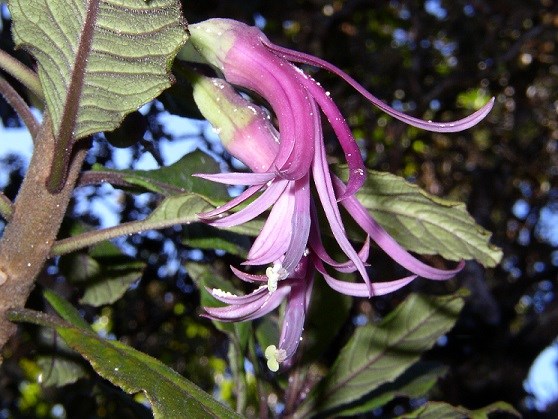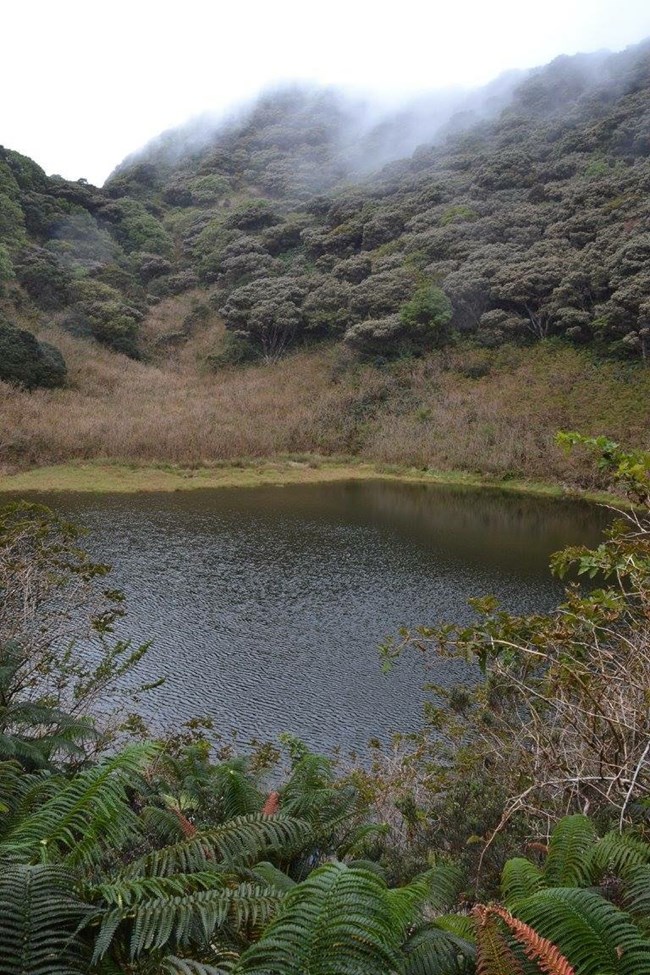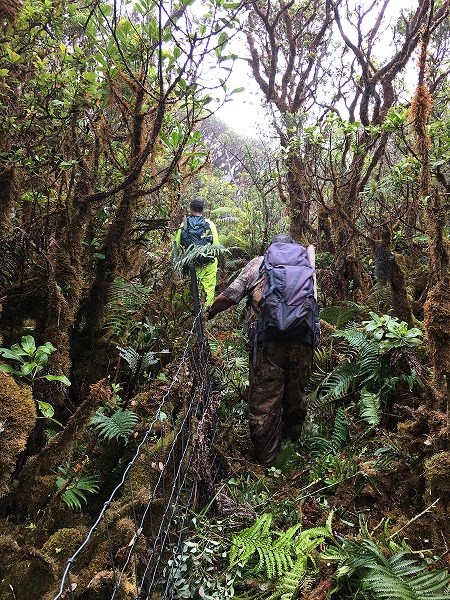|
Richly biodiverse, the wet rainforests and bogs of upper Kīpahulu Valley are a key refuge for many species of native Hawaiian plants and animals disappearing elsewhere. No trails or roads are planned there in order to deter devastating non-native species from penetrating the Valley. Entry is allowed only to resource managers and scientists conducting research and management essential to understanding and protecting this rare relictual ecosystem. 
NPS Photo Thomas Bellfield Kīpahulu Biological Reserve Background The upper Kīpahulu Valley shelters many rare native Hawaiian species. In 1967, the first ever Kīpahulu Valley expedition to this remote valley was conducted by The Nature Conservancy. The expedition explored the ecological treasures of the Kīpahulu Valley and helped bring about its protection as a biological reserve. The only people allowed into the reserve today are scientists and managers authorized to conduct research and conservations projects. The absence of trails and development in the valley is intended to conserve what is left of its pristine character. 
NPS Photo / Legario Eharis Climate Change The plant sanctuary that is the Kīpahulu Biological Reserve is being disrupted by warming temperatures. This is happening because of the way that warming is impacting the inversion layer, the layer in the atmosphere that controls the usual elevation of clouds. As temperatures warm, the inversion layer is rising up the slopes of Haleakalā and diminishing rainfall in the Kīpahulu Valley which sits between sea level and 3,000 ft elevation. The 1967 expedition found that 90% of the plants found in the valley are endemic to Maui. That percentage is likely to fall or have fallen in recent decades. Changing rainfall and temperatures are inviting invasive species to impact the lower ʻOheʻo Gulch area of the valley, and are continuing their march uphill towards the reserve. Aggressive action by park managers of planting native species and removing invasives is attempting to thwart this change. 
NPS Photo- Eharis What Can You Do? In order to protect this pristine environment, there are several ways that the public can assist park resource managers. 1. Respect park boundaries and policies by staying out of the biological reserve. 2. Appreciate native Hawaiian species and understand their threatened condition. 3. Understand how climate change is impacting Haleakalā and public lands nationwide. 4. Explore ways to change your impact on the climate. |
Last updated: July 16, 2025
